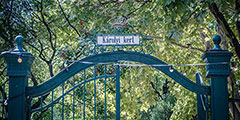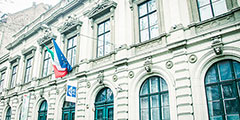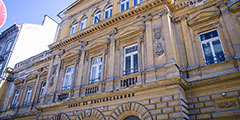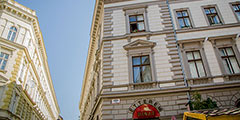Just one block from the busy main road of the Múzeum Bld. a space for nature, culture, recreation and playing
The oldest public garden in the inner city of Budapest. A tiny, French-style green park hidden among the tenement blocks like a box of jewels – a peaceful beauty spot for the harrassed city dweller. The noise of the traffic is cancelled out by the laughter of children. Typically there are two kinds of people among the park’s regulars: the students of neighbouring schools playing under the watchful eyes of their teachers or parents and university students from the humanities and law faculty campuses nearby, nibbling at their sandwiches and basking in the sun between two lectures.
A small café placed its tables and chairs right by one of the corners of the garden, attracting passers-by for a little chit-chat.
The garden was declared a public park and landscaped in 1932. It belonged to the Károlyi Palace, hereby its name. The Károly family had come by this territory in 1768 and they remained its owners up till 1932.
The garden is home to the statue of Dániel Irányi, of the 1848 revolution, made by sculptor Ede Kallós. The Károlyi palace is home to the Petőfi Literary Museum, with open-air theatre performances held in its courtyard on summer evenings.
Dániel Irányi (1822 – 1892) was a very active player in the 1848 uprising, as member of various opposition circles and citizens‘ committees, MP and government commissioner. In 1886 he was among the founding members of the Association for Noble Morals. He was an undeterred supporter of the freedom of religion and the introduction of secular marriage.
„Liberty and love/These two I must have.“
– Sándor Petőfi
Questions: Where can you find peace?
What are the everyday activities or places, which give you the sense of peace?
Recreation spots: the garden itself!, the café on the corner, Pet?fi Literary Museum, the cafés in Egyetem Square.






 7 minutes
7 minutes


